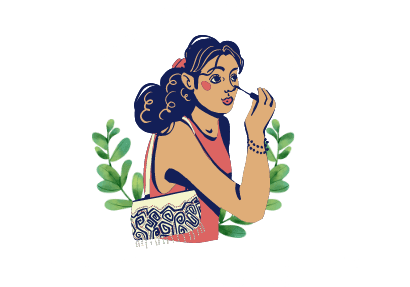Here is your complete and ultimate guide to thinning hair vs fine hair.
Introduction to Thinning Hair vs Fine Hair
Hair is one of the defining features of our appearance. A bad hair day can put a damper on our mood, while a good hair day can make us feel confident and ready to conquer the world. But when it comes to thinning hair vs fine hair, the distinction can be confusing. Are they the same thing? Or are they two different hair types that require different care and styling techniques? In this article, we’ll dive into the differences between thinning hair and fine hair and provide tips on how to care for and style both. Here is your complete guide to thinning hair vs fine hair. So let’s explore the difference between thinning hair vs fine hair.
What Is Fine Hair?
Fine hair refers to the diameter of each individual strand of hair. Fine hair has a small diameter, which makes it more prone to breakage and damage than thicker hair. People with fine hair may also struggle with achieving volume and body, as the hair doesn’t have as much mass to create a fuller look.
If you have fine hair, there are a few things you can do to make it appear fuller and thicker. First, consider getting a haircut with layers. Layers can add movement and texture to your hair, which can make it look fuller. You can also try using volumizing products, like mousse or root lifters, to give your hair some lift and body. When blow-drying your hair, use a round brush to create volume at the roots.
What Is Thin Hair?
Thin hair, on the other hand, refers to the density of hair on your scalp. People with thin hair have fewer strands of hair per square inch of scalp than those with thicker hair. Thin hair can be genetic or caused by factors like aging, hormonal changes, or medical conditions like alopecia.
If you have thin hair, you may notice that your scalp is more visible than you’d like. To make your hair appear fuller, try adding some texture to your hair with a salt spray or texturizing powder. These products can create the illusion of more hair by adding volume and grip. You can also consider getting a haircut with choppy layers to add movement and body to your hair.
Thin Hair vs. Thinning Hair
It’s important to note that thin hair and thinning hair are not the same thing. Thin hair refers to the density of hair on your scalp, while thinning hair refers to hair loss or a decrease in hair density over time.
Thinning hair can be caused by a variety of factors, including genetics, age, hormonal changes, medication, and certain medical conditions. Thinning hair can be gradual or sudden, and can affect both men and women.
| Thinning Hair | Fine Hair | |
|---|---|---|
| Definition | Hair that is falling out or shedding more than usual. | Hair that has a smaller than average hair strand diameter. |
| Causes | Genetics, hormonal changes, medical conditions, medication side effects, stress, and aging. | Genetics, aging, and environmental factors such as heat, styling, and chemical damage. |
| Appearance | Hair looks sparse, with wider gaps between strands. | Hair looks limp and lacks volume. |
| Texture | Hair texture may change from coarse to thin, and may be dry or brittle. | Hair is generally soft, silky, and smooth. |
| Styling | Requires products that add grip and texture to create the illusion of fuller hair. | Requires lightweight products that add volume and lift without weighing it down. |
| Hairstyles | Styles that add volume and movement, such as layers, curls, and waves, work well. | Styles that add volume and body, such as bobs, pixie cuts, and layered cuts, work well. |
| Health | Can be a symptom of an underlying health condition, and may require medical treatment. | Can benefit from a healthy diet, gentle hair care practices, and protection from heat and environmental damage. |
How to Tell If Your Hair Is Thinning
So, how can you tell if your hair is thinning? The easiest way is to look at the density of hair on your scalp. If you notice that your part looks wider than it used to or that your hairline is receding, these can be signs of thinning hair. You may also notice more hair falling out than usual when you brush or wash your hair.
If you’re concerned about thinning hair, it’s important to talk to your doctor or a dermatologist. They can help you determine the underlying cause of your hair loss and recommend treatment options.
Styling Fine Hair
Styling fine hair can be tricky, but with the right products and techniques, you can create a full, voluminous look. Here are a few tips:
- Use a volumizing shampoo and conditioner to add body and lift to your hair.
- Apply a volumizing mousse or root lifter to damp hair and blow-dry with a round brush to create volume at the roots.
- Avoid heavy, oily products that can weigh down your hair and make it look limp.
- Use a dry shampoo between washes to refresh your hair and add texture and volume.
- Try a half-up hairstyle to create the illusion of fuller hair. Gather the top half of your hair into a ponytail or bun, leaving the bottom half down.
- Use a curling iron or hot rollers to add volume and texture to your hair.
Styling Thin Hair
If you have thin hair, you may find it challenging to create a full, voluminous look. Here are some styling tips that can help:
- Use a texturizing spray or powder to add grip and volume to your hair.
- Blow-dry your hair upside down to create lift at the roots.
- Avoid heavy, oily products that can weigh down your hair.
- Use a wide-toothed comb to gently detangle your hair and avoid pulling or tugging on it.
- Consider getting a haircut with choppy layers to add movement and body to your hair.
How to Keep Both Fine and Thin Hair Healthy
Regardless of whether you have fine, thin, or both types of hair, there are a few things you can do to keep your hair healthy:
- Use a gentle, sulfate-free shampoo and conditioner that won’t strip your hair of its natural oils.
- Avoid using hot tools like flat irons and curling irons too often, as they can damage your hair and cause breakage.
- Use a heat protectant spray before using hot tools to help prevent damage.
- Eat a healthy, balanced diet that includes plenty of protein, vitamins, and minerals that are essential for healthy hair growth.
- Avoid harsh chemicals and treatments like bleaching, perming, or relaxing, which can damage your hair and cause breakage.
The Best Hairstyles for Thin Hair
If you have thin hair, there are several hairstyles that can help create the illusion of fuller, thicker hair.
Full, Fabulous Curls
Curly hair can add volume and texture to thin hair, making it appear fuller and thicker. To create full, fabulous curls, use a curling iron with a large barrel size (1-2 inches) and wrap sections of hair around the barrel, holding for a few seconds before releasing. Use a texturizing spray or powder to add grip and hold to your curls.
Beachy Waves
Beachy waves are a popular hairstyle that works well for thin hair. To create beachy waves, use a texturizing spray or sea salt spray on damp hair and let it air dry. Once your hair is dry, use a curling iron to add loose waves throughout your hair.
Read More About How Much Caffeine is in Green Tea and Why It Matters?
Day 2 Texture and Volume
Sometimes, the best hairstyle for thin hair is one that’s a little messy and undone. To create day 2 texture and volume, start with clean, dry hair and use a texturizing powder or dry shampoo at the roots. Use your fingers to scrunch your hair and create volume, and add a few loose waves throughout your hair with a curling iron.
Read More About Why do I Look so Bad in Douyin Make Up.
FAQs about Thinning Hair vs Fine Hair
Is my hair thinning or just fine?
It can be difficult to determine whether your hair is thinning or just naturally fine, but there are some signs you can look for. If you notice a significant increase in hair shedding or bald patches, this may indicate thinning hair. On the other hand, if your hair has always been fine and doesn’t appear to be falling out in larger amounts than usual, it is likely just fine hair. It’s always a good idea to consult with a dermatologist if you are concerned about hair loss or thinning.
Read More About Do you Cleanse After Removing Make Up in the Middle of the Day?
Is thin hair and thinning hair the same?
No, thin hair and thinning hair are not the same. Thin hair refers to the diameter of the individual hair strands, while thinning hair refers to the amount of hair that is falling out or shedding. It is possible to have thin hair without experiencing thinning or hair loss, and vice versa. It’s important to understand the difference between the two so that you can choose the right hair care products and treatments for your needs.
Read More About Diet Coke vs. Coke Zero: Which Zero Soda Diet Tastes Most Normal?
Conclusion
While thinning hair vs fine hair may seem similar, they have different causes and require different care and styling techniques. By understanding the differences between these two hair types and using the right products and styling techniques, you can achieve a full, voluminous look that makes you feel confident and beautiful.
Read More About Olive Oil is Good for Your Hair: How to Use It and Its Benefits.

